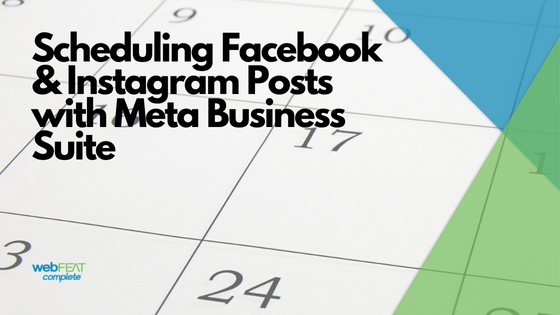It’s no secret that social media has changed the marketing game. Digital marketing techniques can work for small businesses, but influencer marketing might still seem inaccessible. That shouldn’t be the case. Small businesses are being held back by the myth that influencer marketing is only for brands who can afford to snag a mention in Kim Kardashian’s Instagram story. By partnering with the right influencers to reach the right audience, small businesses can adapt this marketing strategy to generate high-quality, relationship-based leads.
What is Influencer Marketing?
Influencer marketing uses the following and expertise of reputable content creators to sell products, generate leads, and spread awareness of a brand. Think of it like toothpaste commercials that say nine out of ten dentists recommend their toothpaste, except those dentists are all tweeting about the toothpaste in their own words.
Contrary to popular belief, influencers aren’t always “social media famous.” While the term is often applied to Instagram celebrities, influencers that are most effective are sometimes categorized as “micro influencers,” or people that have less than 100K followers. The reason these influencers will have the best results is because they have a small, niche following of people who can relate to that influencer’s life. These types of influencers tend to have higher engagement rates, or, a higher percentage of their followers interact with them. It’s more valueable to have a small, active community than a large, silent one.
A great example of this: for the longest time, I have been on the hunt for the perfect pair of high-waisted jeans. This silhouette has been on trend for a while now, but very few clothing companies have been able to get it right for the midsize body type. I’d seen plenty of advertisements featuring women who didn’t look like me, and if anything, this type of marketing deterred me from going to a store. Plus, these advertisements didn’t tell me anything about the brand’s ethics or manufacturing processes. Sustainable practices in clothing manufacturing are important to me. So, how is a clothing company supposed to turn someone like me, who has very specific sizing and values-based needs, into a customer?
Turns out, I’m not the only person with these needs. While browsing my Instagram discover page, I came across a blogger named Shannon. She posts about her love of ethical fashion and home decor, and she also identifies as midsize (aka the no-man’s-land between straight and plus sizes in women’s clothing). Seems pretty niche, right? Well, she has over 38k followers, and I became one of them. Her posts average about 2,000 likes each and 30+ comments. She looks like me, posts content that is relevant to my specific interests, and her followers consist of a community of like-minded women that I want to engage with. She’s also an affiliate for Everlane, a denim company with somewhat extended sizing that boasts products made from 80% recycled materials and fair wages for their factory workers. Minutes after following Shannon on Instagram, I signed up to receive emails from Everlane. A month after that, I made my first purchase, a beautiful pair of high-waited jeans that I now rave about on social media whenever I get the chance. The cycle continues.
Marketing To Influencers
Because of influencer marketing, I went through Everlane’s entire sales flywheel. I wouldn’t have even known they existed otherwise. Because they partnered with someone who has an audience that aligns with their target market, they found their perfect customer. Small businesses can apply this practice as well.
Micro influencers exist inside of any target market, no matter how small. For example, if you own a roofing company that serves a specific suburban area, you could form a partnership with a local mom who runs a blog dedicated to flipping homes in the community. If you’re a screen printing shop in a small college town that gets a lot of business from the local Greek Life community, consider forming a relationship with an especially vocal chapter president who’s good word could earn you business from their entire network. People everywhere, in every community, are using social media to talk about the things they love and value. They’re being discovered and listened to by people with similar loves and values. Any business can participate in these conversations, you just have to find the people who are leading them.
Types of Influencers
Those are just two examples of the type of people that might be considered an influencer inside of your ideal audience. Other types of influencers might be the following:
Activists
Someone who uses their platform to talk about issues might have an interest in promoting a company that shares their ideas. These types of people attract followers because they are vocal about what is important to them, and a community builds around their passion.
Curators
Creating a social media presence that is highly curated creates an aesthetic that is both high-end and accessible. When content creators put a lot of thought into the artistry of their posts, it demonstrates that they’ll likely be choosy about the brands they partner with as well. This makes their followers trust their opinions and endorsements.
Opinionated Authorities
Leaders in a field or industry will fall under this category. An opinionated authority is anyone who has experience and reputation and leverages these things to promote their insights and advice.
Often, an influencer might be a combination of any or all of these. They often have a diversity of interests that work together to create a distinct voice and presence. For example, Shannon, who I mentioned above, would fall under the activist category for her interest and promotion of ethically sourced clothing. She’s also be considered a curator because of the distinct look and feel of her visuals.
What Influencers Look For
Influencers are social savvy and aesthetically aware. They look for a solid online presence that will benefit their following when they link to and share it. This is why it’s important to build your brand’s social media strategy before seeking out an influencer partnership. Even for small businesses that might have very humble followings, keep in mind that an influencer’s world is online. You want to be able to have a way take part in that world, and you want to look good doing it.
Creating a Brand Partnership
So, you’ve found an influencer or two that you think it would be valuable to partner with. You’re certain that their content would be important to your target market. You’re ready to reach out and begin a brand partnership.
There are a few typical ways to do this, but there aren’t any rules that are set in stone. Most of the time, agreements will come in the form of product samples and sponsored posts. Businesses will give free samples of their product or service. Then, the influencer will post honest thoughts about their experience with that product or service. Notice I said “honest” instead of “positive.” Obviously, you don’t want to partner with an influencer only for them to trash talk your brand. But, you do want them to offer a detailed, comprehensive account of their experience with your business, including what might need improvement. Why? Because encouraging honest feedback from those who use your product creates opportunities for engagement. If your audience feels comfortable asking for what they want out of your brand, it creates a personal stake for them. It also gives you a clear way to improve your product or service.
For example, I take an injectable medication called Humira. If you search for Humira on Youtube, you’ll find hundreds of vloggers within in the disability community talking about their experience with the Humira “jab.” The first overarching takeaway from these firsthand experiences is that Humira works. It’s a great medication that has improved disease management for thousands of patients. The second takeaway is that receiving the medication is incredibly painful. The medication excels at what it’s supposed to do, but the user experience is terrible. Plus, you have to endure these painful injections once every two weeks. For patients considering Humira, it developed a double-sided-sword reputation. You’d likely experience symptom improvement, but at what cost?
Because of the outcry, the makers of Humira knew exactly how to improve their user experience. They developed a citrate-free version of the medication. The release of this new formula inspired joy across the autoimmune disability community. People started talking about Humira again in a positive, grateful way. Here’s an excerpt from blogger Natalie Hayden on switching to citrate-free Humira:
“I’m here to tell you it’s completely painless. Less pain than a blood draw. Less than a flu shot. You feel nothing. It’s emotional and overwhelming in the best way. I cried for a good half hour after my first one, happy tears. Tears of joy from a woman who now knows her children will never see their mom struggle in pain. Tears of joy from someone who is eternally grateful for a medication that keeps a painful and debilitating chronic illness at bay. Tears of joy knowing that I will never have to feel that awful pain again. A pain that’s too much to put into words, that was part of my life for so long.”
Powerful, right? That authentic, emotional story started with honesty about the shortcomings of the product. Don’t be afraid of constructive feedback from your influencers and their communities. It can lead to beautiful, meaningful improvements.
Marketing Through Influencers
At this point you might be thinking, okay, that all sounds great, but is it really going to be worth it? When will I see results from influencer marketing? Well, like all authentic things in life, the answer is nuanced.
In an interview with Forbes, CMO influencer Tamara McCleary says this of influencer marketing:
In the U.S, because we are such beta testers, we will try something for a month and then keep flipping around to the next marketing program du jour. So many companies in the U.S. don’t even think about influencer marketing and the few who do often plan and execute an influencer marketing program incorrectly because they treat influencer marketing as a transaction, or a short-term initiative.
To execute a successful influencer marketing strategy, it’s important to nuture relationships. The whole point of influencer marketing is that you’re working with a real person. You need to treat them that way. Engage with their social accounts. Make informed observations about how your product would benefit their life, and the lives of their followers. Specify which of your products or services would be a great fit for them and be able to explain why. Influencer marketing is a human-first idea, and the humanity is what makes it so powerful.
More Benefits of Influencer Marketing
Speaking of the power of influencer marketing, let’s break down exactly what that is. We’ve already talked about the ability to target niche markets, and the incredible community-building potential. Here are some further perks of using influencer marketing.
Access
Think about this: when you see a commercial on cable TV, that commercial has to work hard to stick in your brain. It needs to have bright colors or a funny jingle or a memorable slogan. The hope is that once you eventually make it to the store and see the product on the shelves, you’ll remember the ad and buy the product. But, it could take weeks between seeing a commercial and then seeing the product in store. During that time, you’ll see thousands of other ads. The more ads you see, the more unlikely it is that you’ll remember any of them.
With influencer marketing, consumers have instant, convenient access to promoted businesses. Your product or service becomes more accessible. Influencers can provide links to a check-out screen, or a product page, or a newsletter sign-up. These calls-to-action allow your business to seamlessly integrate into the lives of your potential buyers, with no lag time.
SEO Value
A key factor in determining where your website appears in search results is Doman Authority, or DA. The higher your DA, the more likely it is that Google will display your site for relavent searches. This translates to more visibility, which in turn means more leads.
Influencer marketing can be be a great source of backlinks. Backlinks are when other sites link to your site, and they’re great for building DA. The more sites that point back to your site, the more Google understands that your site is credible. If an influencer has a popular site or blog, including links to your site will do wonders for your ranking.
Low Cost
Compared to other marketing efforts, influencer marketing is inexpensive, with a great ROI. According to a 2017 study by Influencer Marketing Hub, brands make $7.65 in media value per $1 spent on influencer marketing.
Plus, there is some symbiosis that lowers costs even further. Especially with micro influencers, getting attention from brands increases their credibility. It’s a marketing strategy that is beneficial for both sides. Where there is more than strictly monetary value at play, budget can be flexible or negotiable.
Marketing as an Infleuncer
If you are a very small business, or a one-person operation, working with influencers might not be right for you. Instead, you might be interested in acheiving influencer status for yourself. While there isn’t a set path for this, here are a few tips.
Build Your Authority
Becoming an influencer isn’t something that happens overnight. You need to give people a reason to follow, engage with, and trust your content. Trust in your ability to share informed opinions and insights. Don’t assume that you’re not adding anything new to the conversation. Even if you’re saying things that have already been said, it could be your unique perspective that resonates with people.
Part of having authority is offering value to your followers. Create content that meets their needs, answers their questions, or empathizes with their experiences. Don’t fear vulnerablity. Share, create, and give.
Be Authentic
In a video essay exploring the emotional impact of being a content creator, Youtuber Lindsay Ellis remarks on the risks of marketing within your online persona:
“…the product that [influencers] sell is almost exclusively affect, and this is a form of emotional labor. More and more discussion has turned to creator burnout, but most of that has focused on consistency and maintaining a schedule. Little of that discussion has focused on the emotional burden of the maintaining the affect associated with the creator’s brand. Over time, micro-traumas can build up as a result of someone behaving in a way that does not reflect their emotional truth.”
So, to avoid burnout, influencers should work with brands and products that “reflect their emotional truth.” In other words, use your influencer powers to market products and brands that share your values, fit within your life, and make sense to market to your followers. Not only will faking it have negative emotional side effects, but your audience will be able to tell. And because it’s the internet, they will call you out on it.
For example, fans of the beauty guru Ingrid Nilsen will never forget her ill-fated partnership with Hellmanns Mayonaise. Nilsen is a makeup vlogger whose influencer brand was built upon glamorous tutorials and luxury brands. In 2016, she released a Youtube video where she prepared a chicken and waffle sandwich, drenched in mayonnaise, as a part of Hellman’s #strangewich campaign. The video was painfully inauthetic. It was clear that Nilsen had never used Hellman’s mayonnaise before they sent her a free product and a check. Her followers dismissed the video as a blatant cash grab, and several unfollowed and unsubscribed.
Be Engaged
One of the biggest mistakes that would-be influencers make is that they spend a lot of time creating content, and zero time interacting with the content of others.
So much of community building is genuine interaction in-kind. If you want people to follow you, follow them first! If you want people to read your blog, read the blogs of others! Being an influencer is not the same as being an inaccessible, gated off celebrity. You want to be a participant. Be active. Put life behind your posts and your engagements. If you’re creating valueable content and engaging with your community, people will start to notice.
Whether you’re considering reaching out to an influencer, or becoming one yourself, small businesses should feel empowered to use influencer marketing to grow their leads. After all, the backbone of influencer marketing is community, and that’s what small businesses are all about. Feeling a little intimidated? The reputation management and social media experts at webFEAT Complete would be happy to discuss this further with you. Have an opinion? Leave a comment or share this post! We’d love to hear your feedback and join your conversations. Happy marketing!
“”





